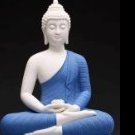Aj Sumedho Interview
-
Recently Browsing 0 members
- No registered users viewing this page.
-
Topics
-
-
Popular Contributors
-
-
Latest posts...
-
223
Trump just made an idiot move
Jean Carroll had no evidence and not even the dates, and she did okay, -
18
Report Temple Tensions: Thai Army Prepares for Border Fence Decision
they need lessons in fence building ! -
-
127
Bombshell: Obama & Crew knew all along, Russia Russia was a hoax.
Why not answer my question? Wasn't it clear enough? -
127
Bombshell: Obama & Crew knew all along, Russia Russia was a hoax.
Don't even reply to that poster. -
127
Bombshell: Obama & Crew knew all along, Russia Russia was a hoax.
Clearly you are oblivious to how much of a next Tuesday you sound. repeating the latest MSM bull that fits your DJTDS. zero for 4 years under JB. But now all of a sudden they produce this, and as usual the weak minded like you lap it up.
-
-
Popular in The Pub



.thumb.jpg.bc523c85a8d558dbc282dca7a2e602c9.jpg)


.thumb.jpeg.d2d19a66404642fd9ff62d6262fd153e.jpeg)








Recommended Posts
Create an account or sign in to comment
You need to be a member in order to leave a comment
Create an account
Sign up for a new account in our community. It's easy!
Register a new accountSign in
Already have an account? Sign in here.
Sign In Now